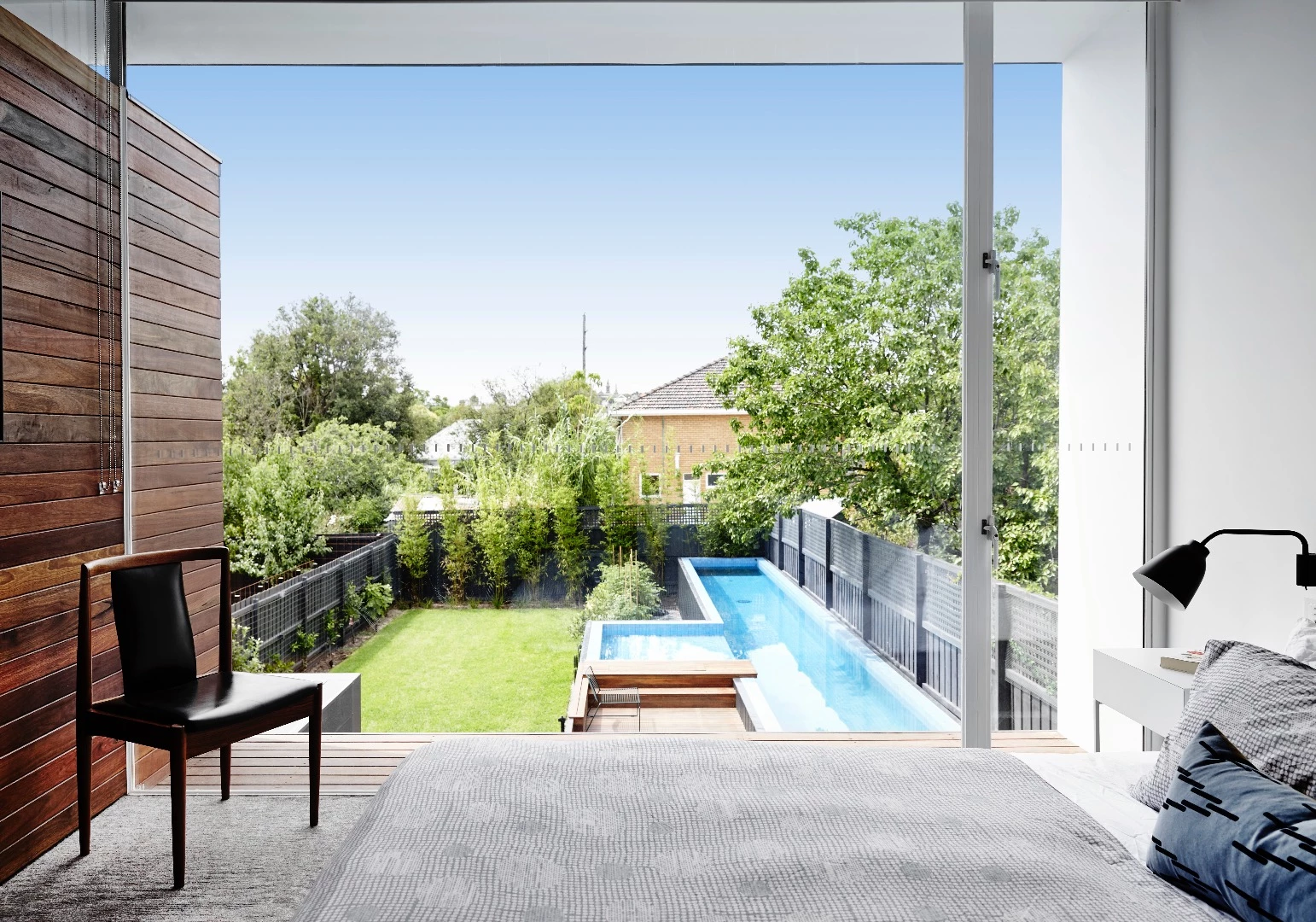Australia's Austin Maynard Architects has completed a high-end Melbourne home that's pitched as a response to the inexorable growth of urban areas. Dubbed That House, it takes up almost half the physical footprint of its neighbors, but remains an enviably attractive place to live. The home also boasts sustainable features including a rainwater collection system and roof-based solar panel array.
Austin Maynard Architects (formerly Andrew Maynard Architects) was commissioned to build a home with "just the right amount of space." Taking the view that the typical Australian abode is far too large for the community, city infrastructure and the larger environment, the firm designed a dwelling that is roughly half the footprint of nearby homes.
Though small for a high-end home of its type, it's by no means tiny. "That House is not a small home," says the firm's writeup. "It's not a solution, nor 'new prototype' for Australian housing. However within its context That House is defiant and resistant. That House is a conscious effort to build a home that is almost half the floor area of its neighbors, yet without compromise of spatial types, functions and quality."
That House takes the form of three rectangular volumes and comprises a total floorspace of 255 sq m (2,744 sq ft), spread over two floors. The ground floor includes two lounges, a dining room, kitchen, study, and bathroom, while the first floor contains three bedrooms, a bathroom, and a W.C.

Like the firm's recent Mills, That House features some neat interior design touches. While the layout of the ground floor is mostly open by default, areas can be isolated by moving hinged walls at key points. This allows somebody to quietly read in the study while others nearby watch TV or chat, for example.
The home also features very generous glazing, so to ensure privacy is available when required, blinds were installed which move in an upward motion instead of down. This enables the occupants to retain the view of the sky, while removing the ability of those at street level to gawp inside.
That House was designed with sustainability in mind, and Austin Maynard Architects sought to optimize passive solar gain by installing no windows whatsoever on the western facade and limiting their use on eastern elevations. A roof-based rainwater collection system feeds a large tank buried in the garden which is used for toilet flushing and irrigation.
In addition, a photovoltaic panel array lowers grid-based electricity use (and cost), and efficient insulation was installed throughout.
Source: Austin Maynard Architects



































